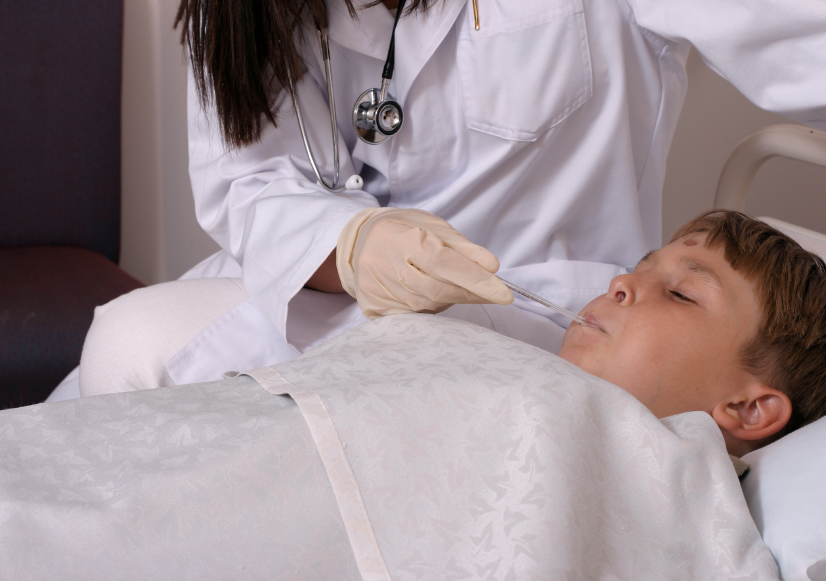All About Hand, Foot and Mouth disease in Singapore
2016 was a tumultuous year when it came to infectious disease in Singapore. As Zika virus dominated headlines for portions of the year and dengue continued to affect thousands upon thousands of Singaporeans, people were constantly on the lookout for mosquitoes and incentivized to keep themselves and their families indoors. Another disease, however, still had a banner year despite not receiving the attention of these others: Hand, foot and mouth disease. Here, Pacific Prime talks about this disease, how it is affecting people in Singapore today, and how people can protect against it.
What is Hand, Foot and Mouth disease?
Hand, foot and mouth is a viral disease that causes sores to occur on the body. These sores can potentially be quite painful and are commonly found on and around the mouth, hands, arms, feet, legs and rear end. The disease is primarily spread through the air via sneezes and coughs, through contact with blister fluid, bodily fluids or infected surfaces, and can also be easily spread through a person’s stool, which is generally more of an issue when dealing with children. For example, contamination can occur because a child didn’t wash their hands properly, or when changing diapers.
After a person is infected, there is an incubation period of three to six days before symptoms arise. An infected individual is most contagious during the first week of having the disease. Beyond the sores, which are more noticeable, other symptoms of hand, foot and mouth include:
- Fatigue or malaise
- Irritation
- Vomiting
- Reduced appetite
- Sore throat
- Fever (usually between 38 and 39 degrees Celsius)
- Rash
- Blisters
- Dehydration
Some notes to add to this are that sores and blisters generally end about a week after they develop. Additionally, some people that become infected with hand, foot and mouth disease will never show symptoms, or symptoms will be very mild, but they can still transmit the disease to others all the same.
As far as worst case scenarios are concerned, while rare, hand, foot and mouth disease can lead to damage of the heart, lungs or brain.
With regards to diagnosing this disease, tests usually aren’t needed, as doctors can generally diagnose based on symptoms.
How is Hand, Foot and Mouth disease affecting Singapore?
2016 was actually one of the biggest years on record for hand, foot and mouth disease in Singapore. In the first half of 2016 there were already over 18,000 cases of hand, foot and mouth disease reported. Even now, in the first week of January 2017 alone, there were over 500 cases reported, which is higher than the number reported in the first week of 2016. As it stands, every case of the disease in Singapore is required to be reported to the Ministry of Health. Of course, if you find that you or your child do have hand, foot and mouth disease, it is also important to report this to any person you may have come in contact with and infected.
There is a webpage provided by the Ministry of Health that lets the public know if there are any locations with an active cluster of hand, foot and mouth cases. As the time of this writing, there is just one facility that is listed as having active clusters of the disease, while none are listed as requiring a mandatory closure due to the rate of infection there.
Prevention and treatment
As alluded to above, children are generally the primary concern when it comes to hand, foot and mouth disease. This is especially true for those under the age of 5, as they are the most at risk for infection. As such, parents should be proactive about keeping children home from school when they have symptoms, so as not to infect other children. After all, hand, foot and mouth outbreaks are usually contained to a specific community, such as a school or daycare. Adequate time should also be taken to ensure that the infected person is not putting others at risk when they return to public life. Consult with a physician about the proper timing.
There is no vaccine or medicinal treatment for hand, foot and mouth, so practical measures should be taken to reduce the spread of infection. Be sure to clean often touched surfaces regularly, avoid close touching as much as possible, and both of the infected person and anyone taking care of them should be sure to wash their hands frequently.
As far as professional medical treatment is concerned, hand, foot and mouth usually does not require it. The disease will generally go away as a result of the body’s own immune system. Of course, home remedies can be used to alleviate symptoms and pain caused by hand, foot and mouth. These include:
- Keep your child hydrated to help their body battle fever, and ease pain from a sore throat.
- Avoid spicy or highly acidic foods to avoid irritating sores.
- Over the counter drugs such a ibuprofen or acetaminophen can be used to reduce pain and fever.
- Mouth pain can be reduced using appropriate mouthwashes or other sprays or ointments.
Pacific Prime can help
Prevention is key, but infectious disease can be a hard thing to avoid when you and your children have to go out in public, especially in a major metropolitan city like Singapore. With this in mind, it is important to make sure that your family has high quality and comprehensive health insurance, so that they can have quick access to excellent healthcare should they develop an illness like hand, foot and mouth disease. This is especially true for new expatriates living in Singapore, as they will likely not have access to the city-state’s public healthcare offerings.
To get a plan comparison of plans from major insurers in Singapore, as well as a free quote, contact the experts at Pacific Prime Singapore! They can identify the plans that best fit your needs, and answer any questions you may have.
- The Pros and Cons of the Singapore Healthcare System - February 27, 2023
- Social fitness: Why you should consider embracing it - February 6, 2023
- Singapore launches new M-SEP scheme allowing firms to hire more S-pass and work permit holders - January 26, 2023






Comments
Comments for this post are closed.